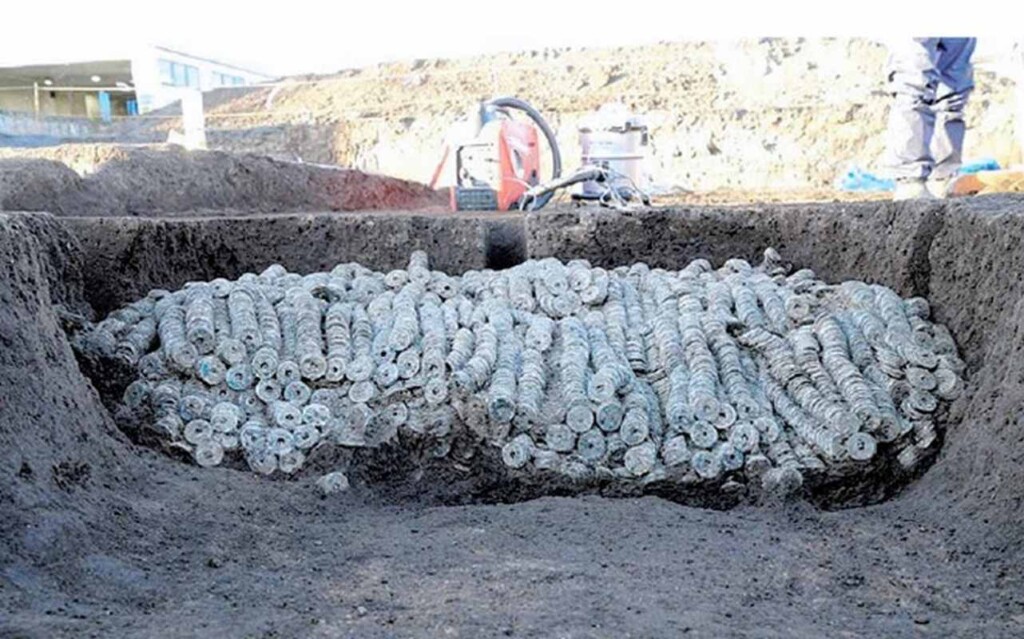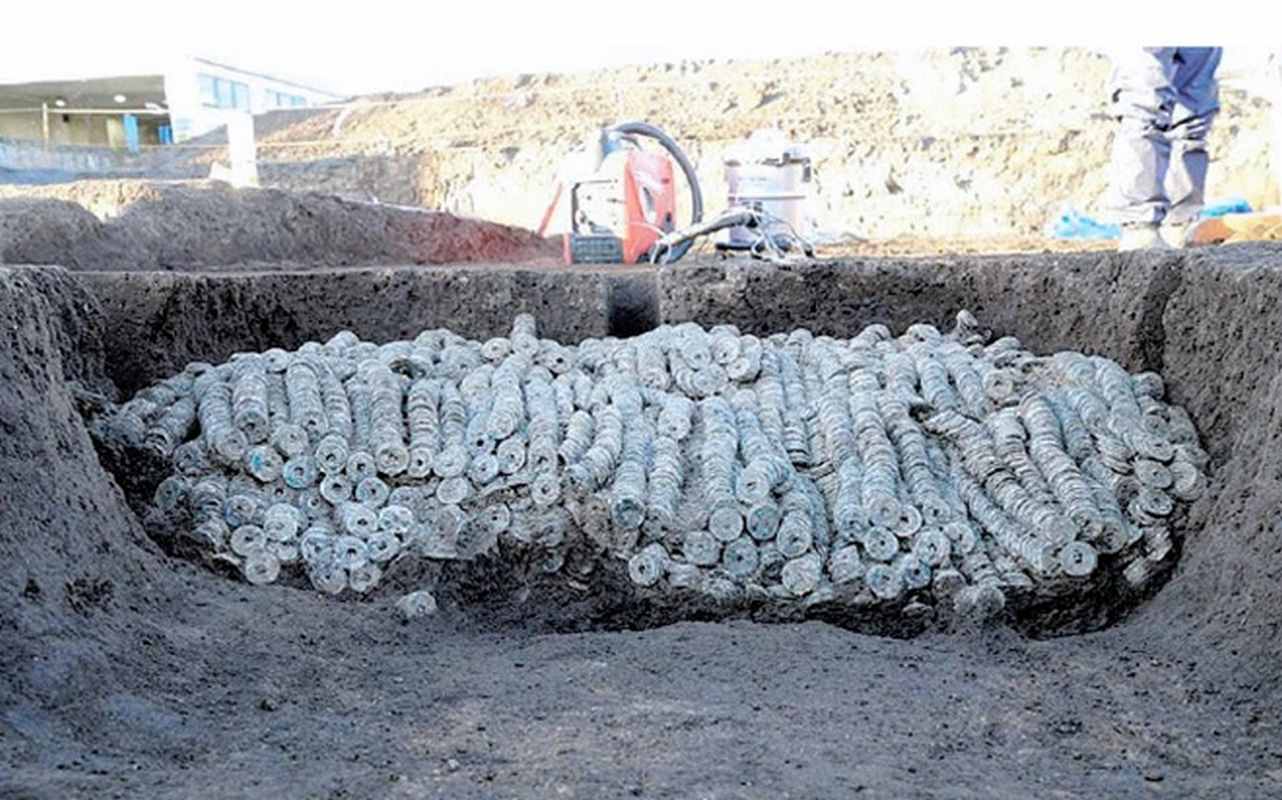
In the Kanto region of Central Japan, a trove of 100,000 ancient coins has been uncovered by city archaeologists, some of which date back 2,000 years.
Stacked like cordwood in the Sojamachi district under a site where a company was planning to build a factory, many were minted in China, some as far back as the Western Han Dynasty (220 BCE – 9 CE).
According to the Japanese daily Asahi Shimbun, 334 of the coins have so far been examined. 44 types have been identified, ranging from the time of Emperor Wendi (175 BCE) of the Western Han to ones as recent as the Kamakura Period (1185-1333).
The paper didn’t say what the materials were, but given the mint and the burial method, they’re probably all copper or bronze.
An innovation of the Chinese, the bronze and copper coins were minted with a hole in the middle. Along with saving material, it allowed for easy transport, storage, and counting as the coins could be slid down a rope made from straw or reeds and carried like a keychain.
It was in this state that the coins were found, stacked and buried—perhaps hastily, according to Asahi Shimbun, whose report mentioned that they were found in property that belonged to wealthy members of the medieval Japanese society of Maebashi.
OTHER JAPANESE HISTORY: Japanese Archaeologists Find Beautiful Bronze Mirror Buried With a 7-Foot-Long Sword
Each bundle contained about 100 coins and a total of 1,060 bundles were dug up, and traces of a straw mat suggests that they were bundled up before their burying.
MORE COIN HOARDS: Man Finds Surprise of a Life in His Field: 700 Coins from Civil War ‘The Great Kentucky Hoard’
The oldest coin is a Chinese ban liang, which may mean “half pair,” or “half bright”—from the first set of coins minted in a unified China.
Other relics have been found in the area, and it has given rise to the belief that it was the center of power of a long-gone province called Kozuke from the Kofun Period.
SHARE This Uncovered Fortune With Your Friends Who Love Eastern History…




















